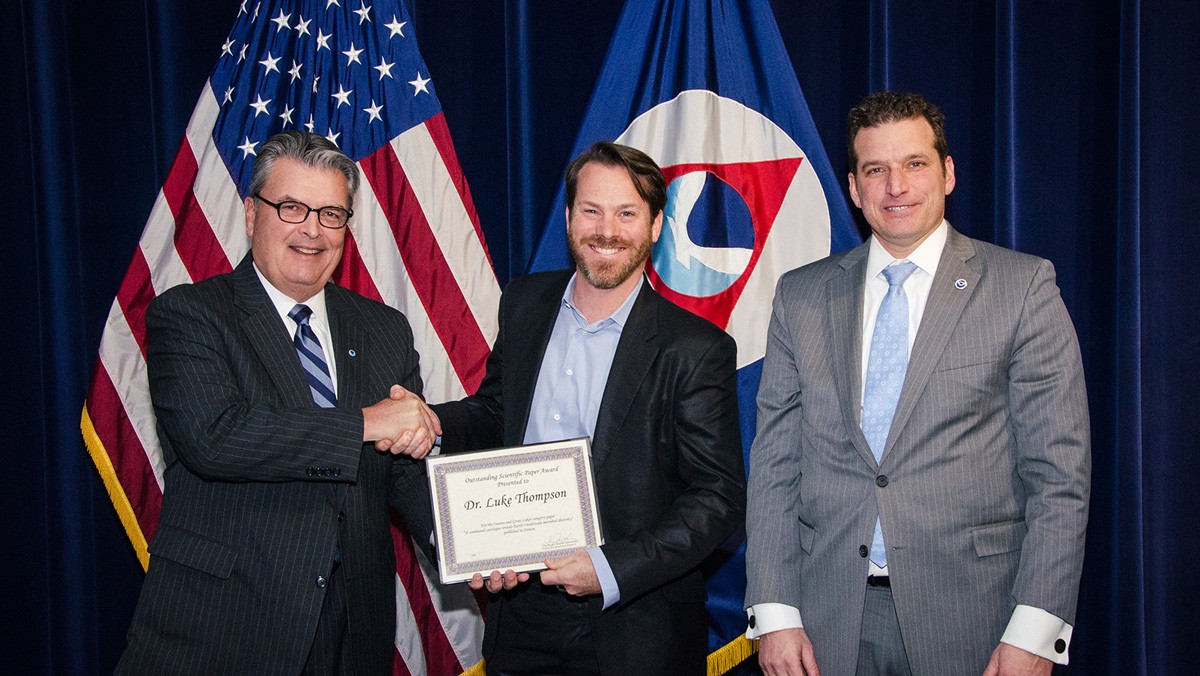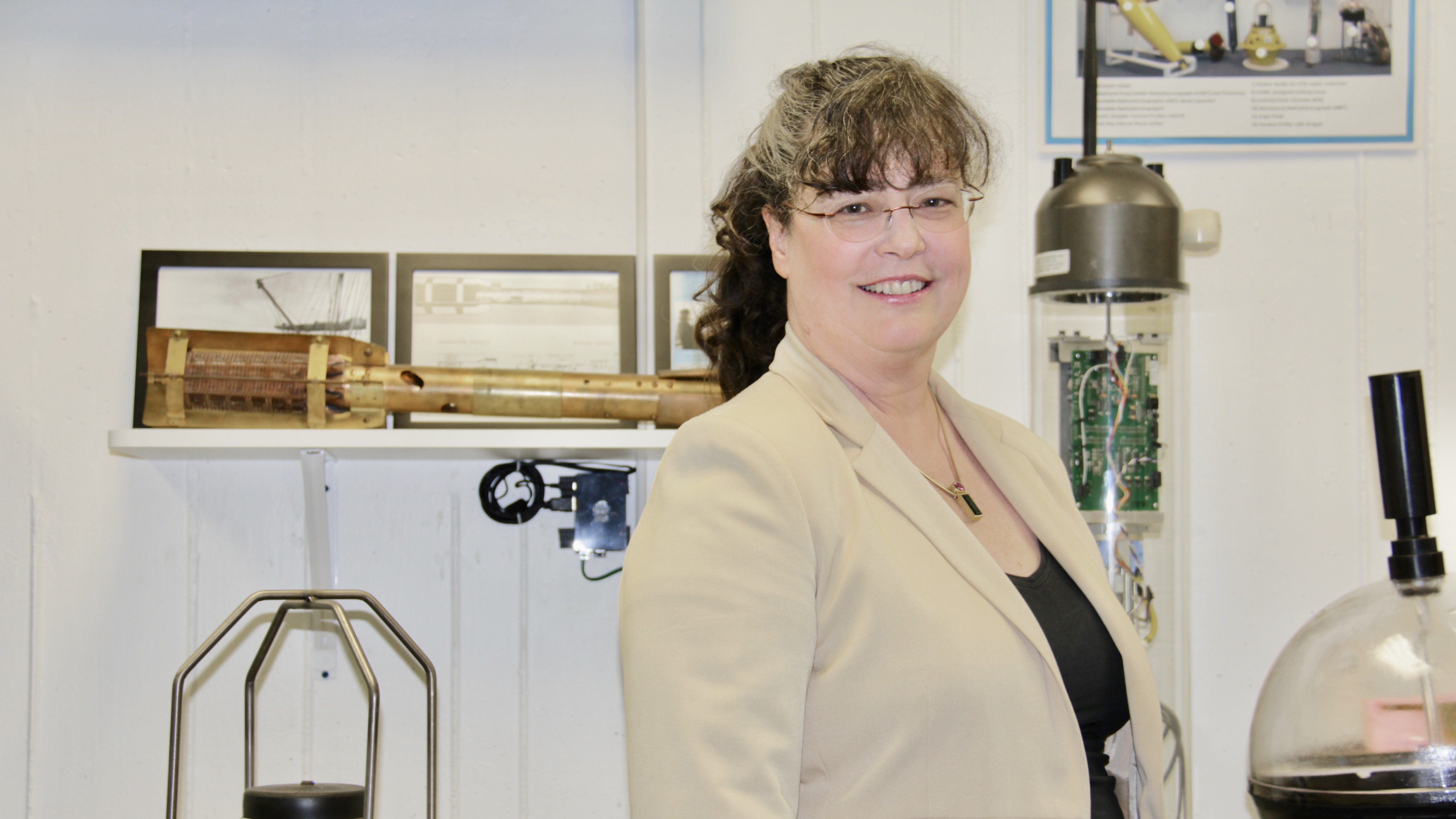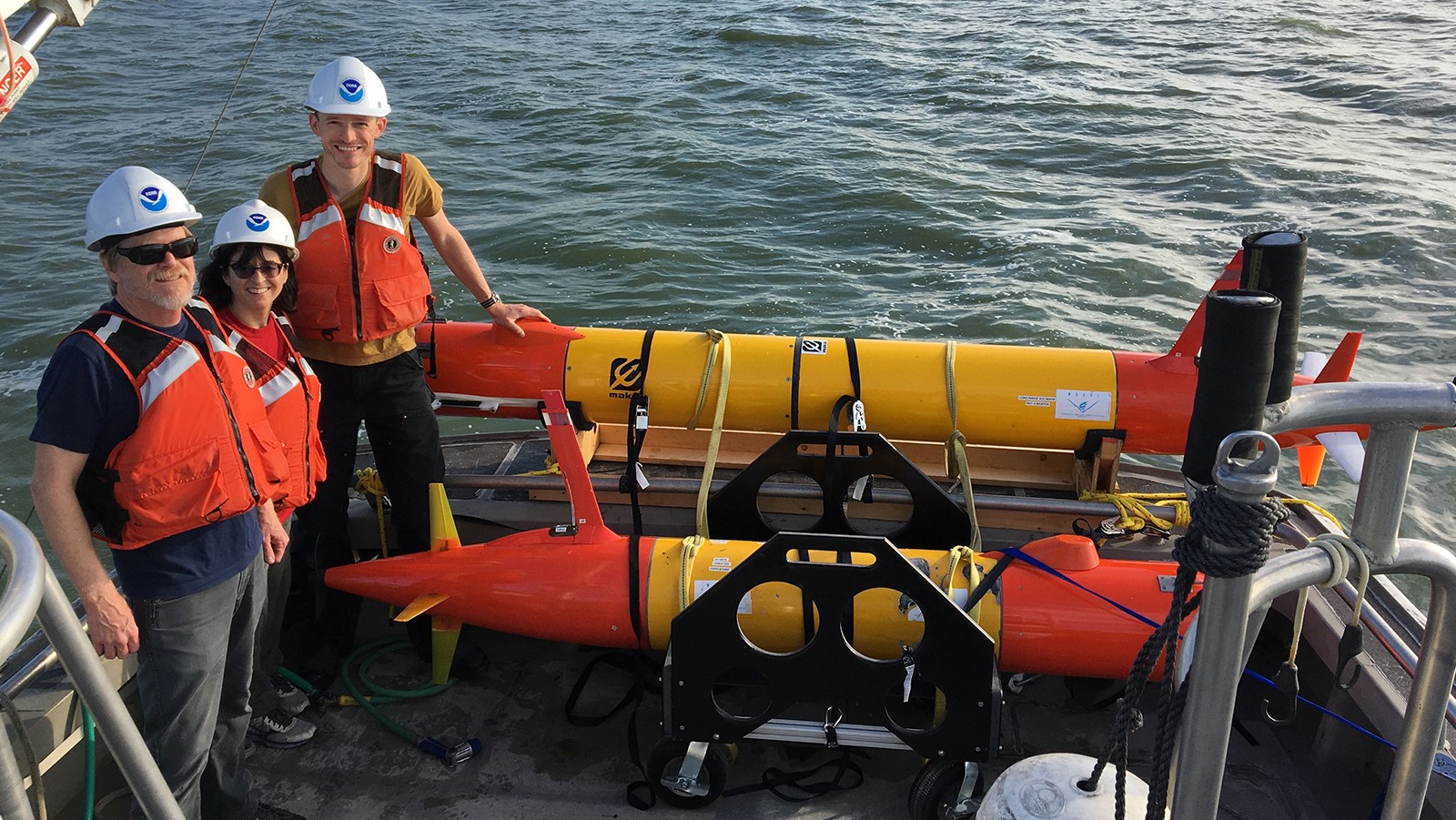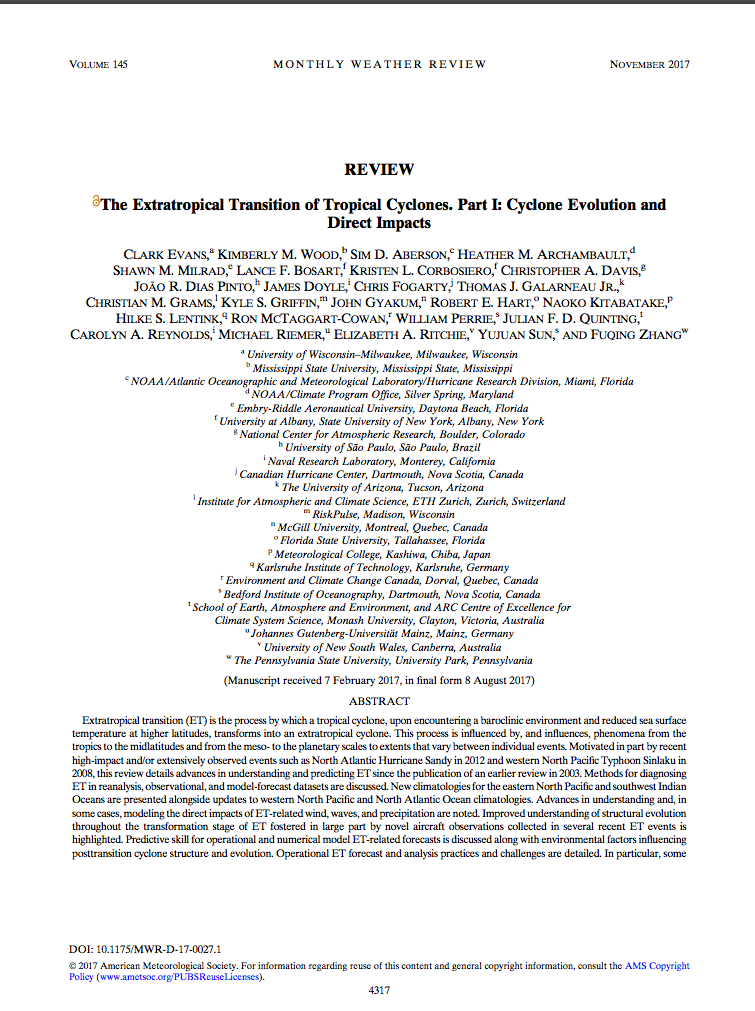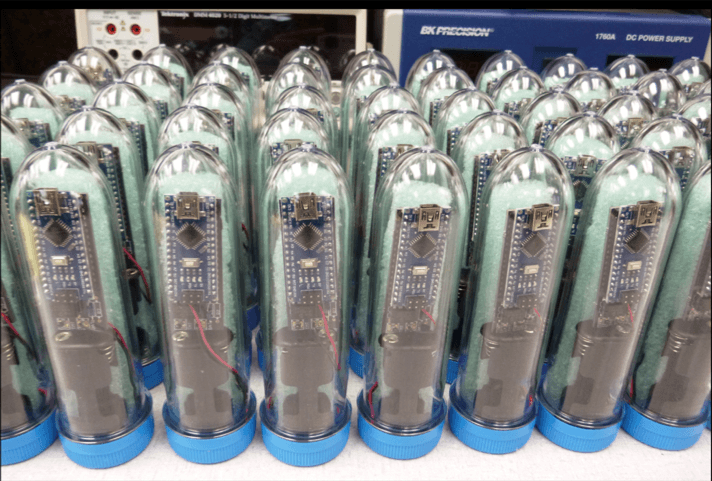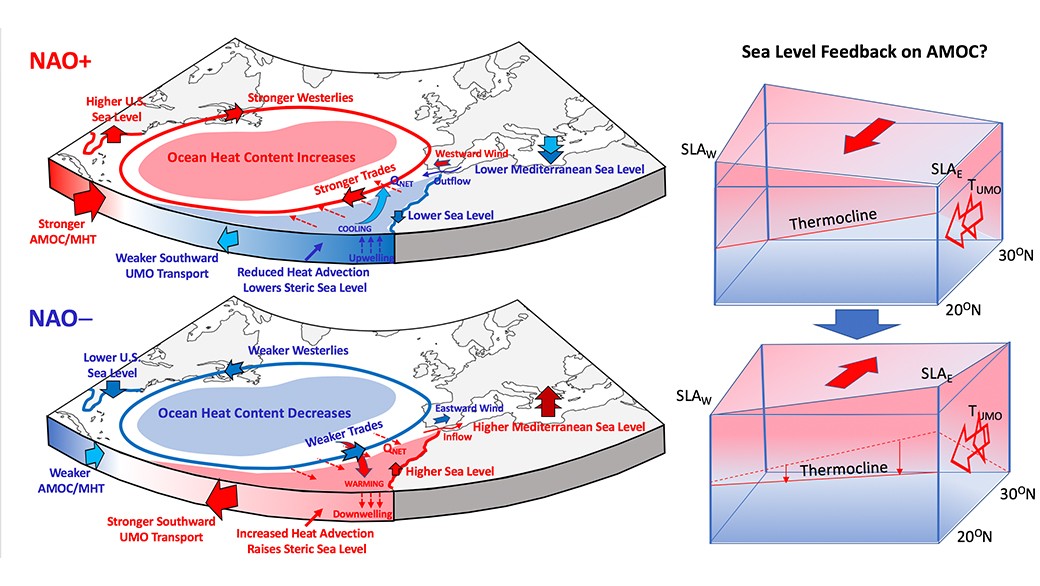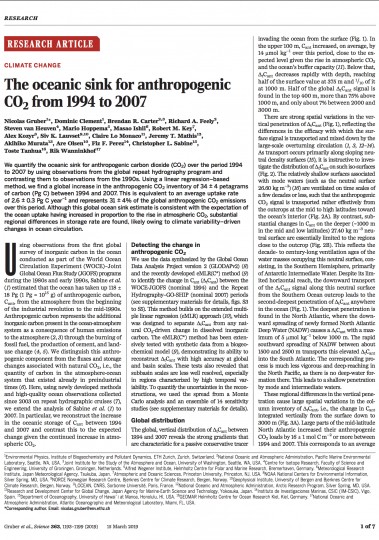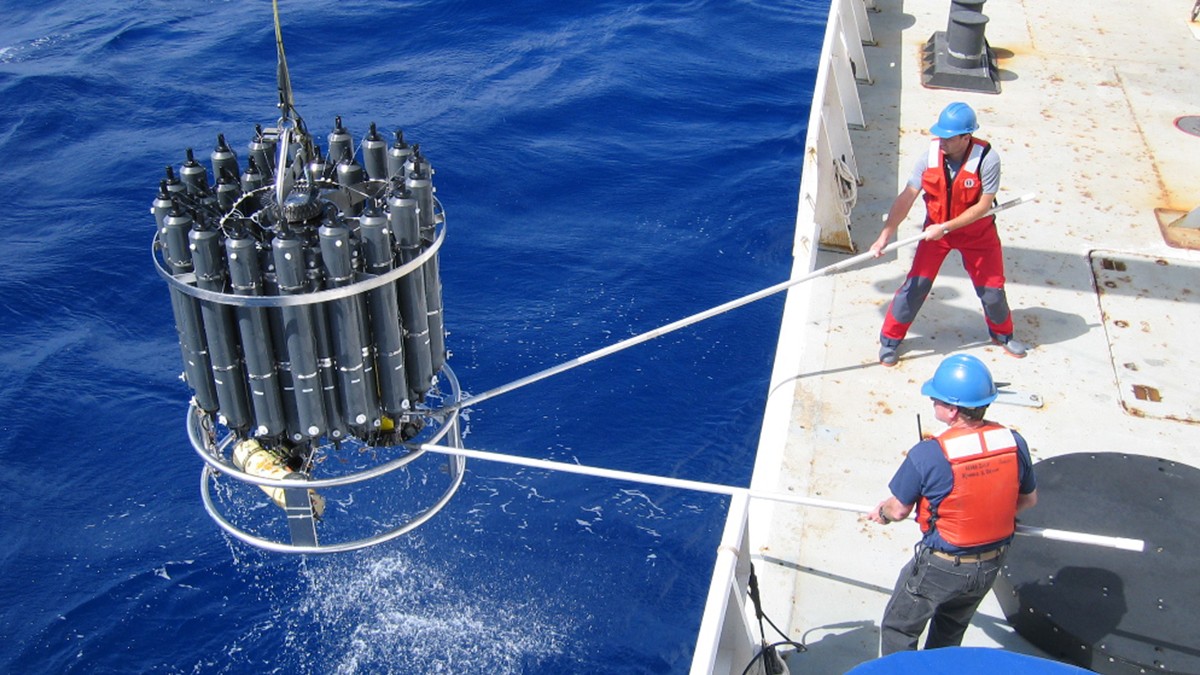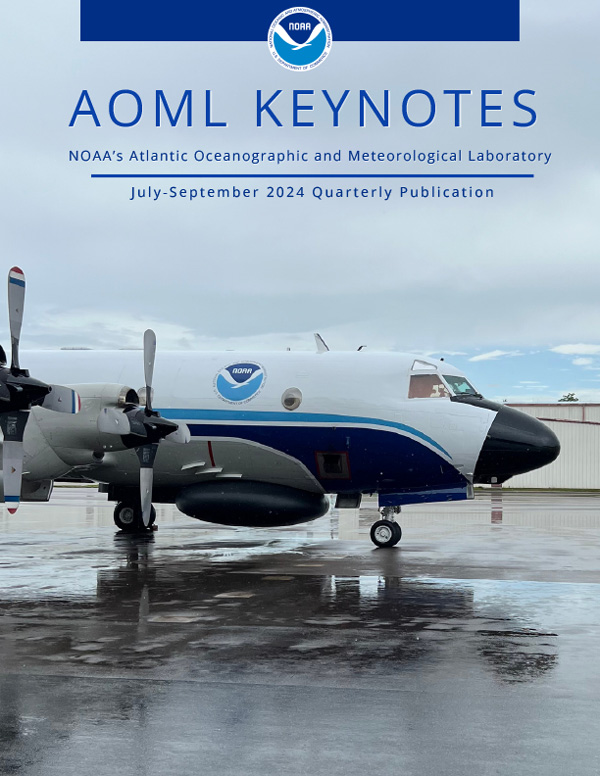Luke Thompson Receives Outstanding Scientific Paper Award
Dr. Luke Thompson, a Northern Gulf Institute professor with AOML’s Ocean Chemistry and Ecosystems Division, and AOML coauthor Kelly Goodwin are the recipients of an Outstanding Scientific Paper Award from NOAA’s Office of Oceanic and Atmospheric Research (OAR) for their landmark paper entitled A communal catalogue reveals Earth’s multiscale microbial diversity. The paper was selected by OAR as the top FY-2018 science article in the Oceans and Great Lakes category. Thompson et al. (2017)* presents an analysis of microbial samples collected by hundreds of researchers worldwide for the Earth Microbiome Project. The paper serves as both a reference database and a framework for incorporating data from future studies, advancing the characterization and understanding of Earth’s microbial diversity
